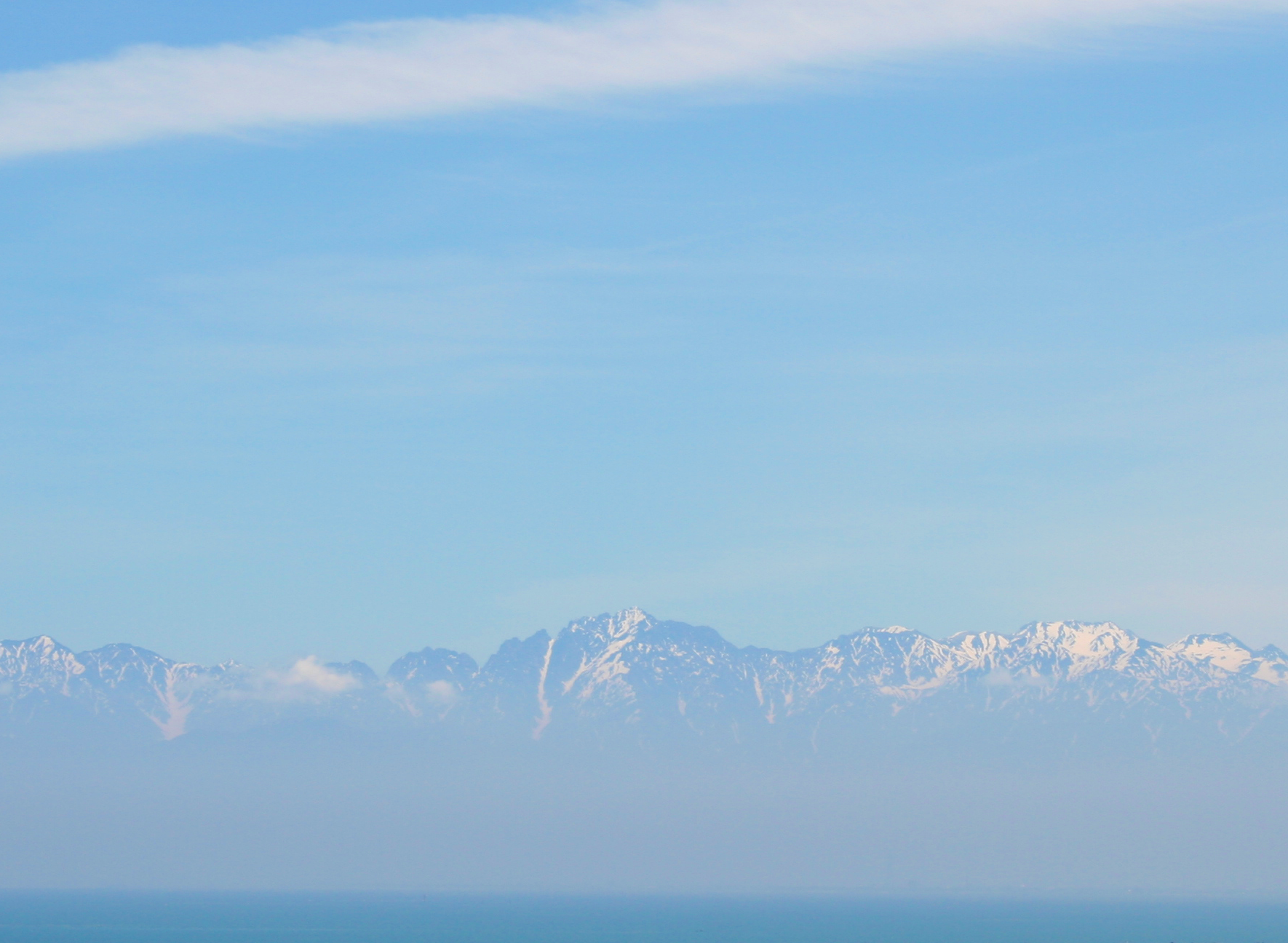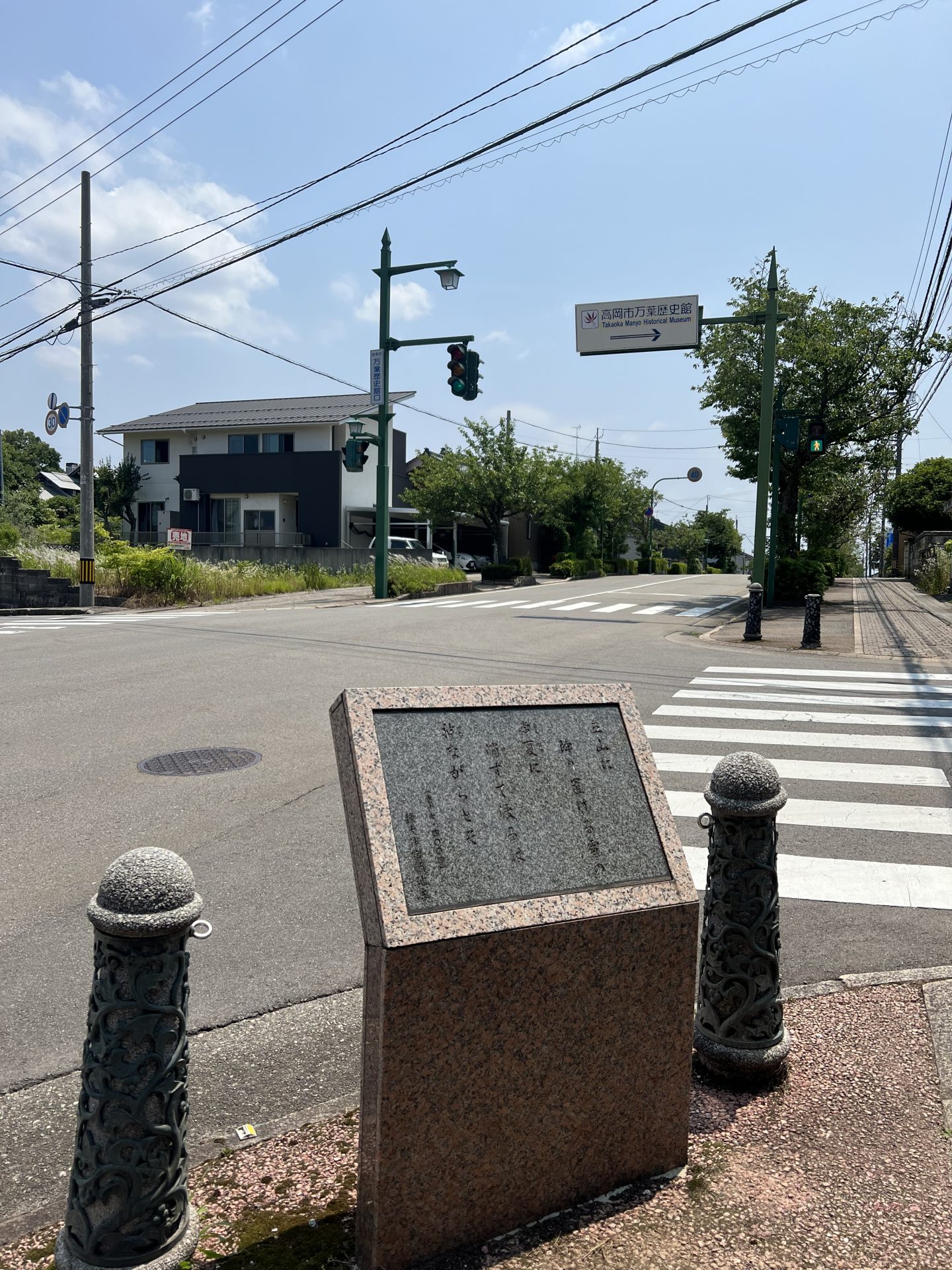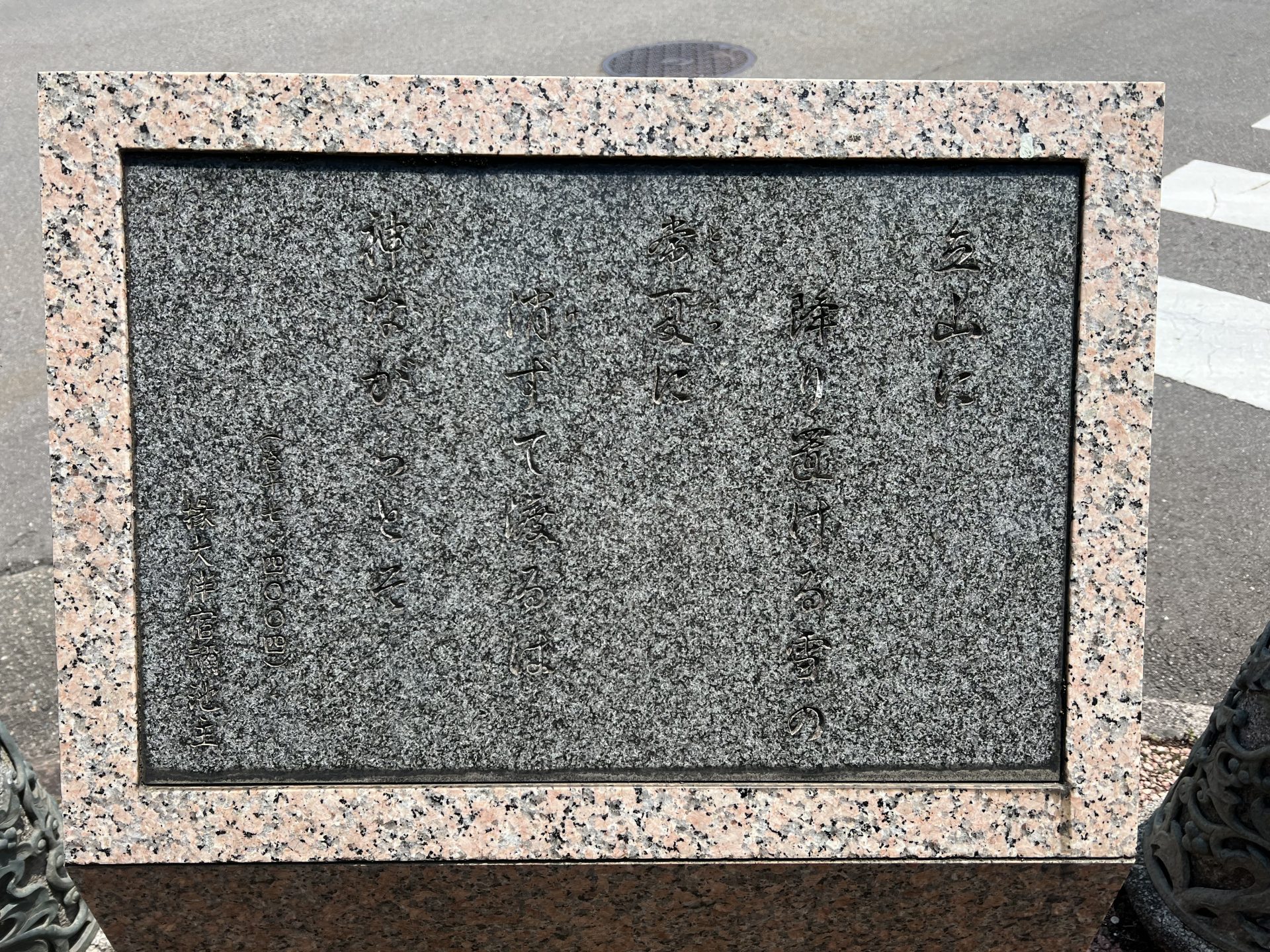歌碑17「立山の雪」-万葉歴史館口 交差点Monument No.17 “Snow on the Tachiyama Mountains”-Man'yō Rekishikan guchi Intersection
2022年07月13日

この歌は、当時、山が神聖視され、その美しさが賞賛されるだけでなく、崇拝の対象にもなっていたことをよく表している。
The poem expresses the belief at the time in the sacredness of mountains, which were not only admired for their beauty but were also objects of worship.
![万葉歌めぐりの旅[Man'yōshū Literary Pilgrimage]](https://www.manreki.com/manyo-songs/images/common/pic_logo.svg)










解説
Commentary
大伴池主の立山の短歌
Tanka poem of Tachiyama by Ōtomo no Ikenushi
『万葉集』の4004番の歌。『万葉集』は、7世紀前半から8世紀後半にかけての約130年間の歌を収めた現存日本最古の歌集で、4500首余りの歌が収められている。この歌の作者は大伴池主(生没年不詳)。池主は越中に赴任した大伴家持(718?~785)の部下にあたり、家持との贈答歌を『万葉集』に多く残す歌人である。
この歌は大伴家持の「立山の賦」に対して大伴池主が応えた歌で、長歌を含む全三首の二首目、第一反歌にあたる。反歌は長歌のあとに添えられた短歌で、長歌の内容を補足したり要約したりすることが多い。この歌は、大伴家持の「立山の賦」の第一反歌「立山に 降り置ける雪を 常夏に 見れども飽かず 神からならし」(巻17・4001)をほぼそのまま踏まえている。異なるのは最後の二句で、家持が「見れども飽かず 神からならし」(立山の雪はいくら見ても見飽きない。それは神としての品格のせいらしい)と感嘆するように詠ったのに対して、池主は「消ずて渡るは 神ながらとそ」(立山の雪が消えずにあり続けるのは、神のご意思のままだということだ)と説明するように答える。どちらも立山の雪を讃めていることに違いはないが、二人の性格の違いが窺えるやり取りである。
この歌は、当時、山が神聖視され、その美しさが賞賛されるだけでなく、崇拝の対象にもなっていたことをよく表している。高岡市の万葉歴史館口交差点に歌碑が立つ。
(解説 ピーター・J・マクミラン)
This is poem number 4004 of the Man’yōshū, the oldest existing collection of poetry in Japan. The Man’yōshū consists of over 4,500 poems and was compiled over a period of around 130 years, from the first part of the 7th century to the latter part of the 8th century. The author of this poem is Ōtomo no Ikenushi.
This poem was written by Ikenushi in response to Ōtomo no Yakamochi’s poem “A Poem on Mount Tachiyama.” Mount Tachiyama is modern-day Mount Tateyama. The poem consists of three sections, with one long part (chōka) followed by two shorter poems (hanka). Hanka are short poems (tanka) that are appended to the end of long poems. This is the first poem of the pair and is based on the first hanka of Yakamochi’s poem (poem no. 4001), which reads, “That we never tire of the snow piled up on Tachiyama, is thanks to it divinity.” In response to this poem admiring the snow on Mount Tachiyama, Ikenushi writes this poem, almost as if in explanation of Yakamochi’s poem.
The poem expresses the belief at the time in the sacredness of mountains, which were not only admired for their beauty but were also objects of worship.This waka poem stone monument stands at the intersection in front of the Manyo Historical Museum.
(English Translation and Commentary by Peter Macmillan)